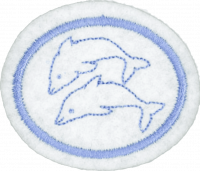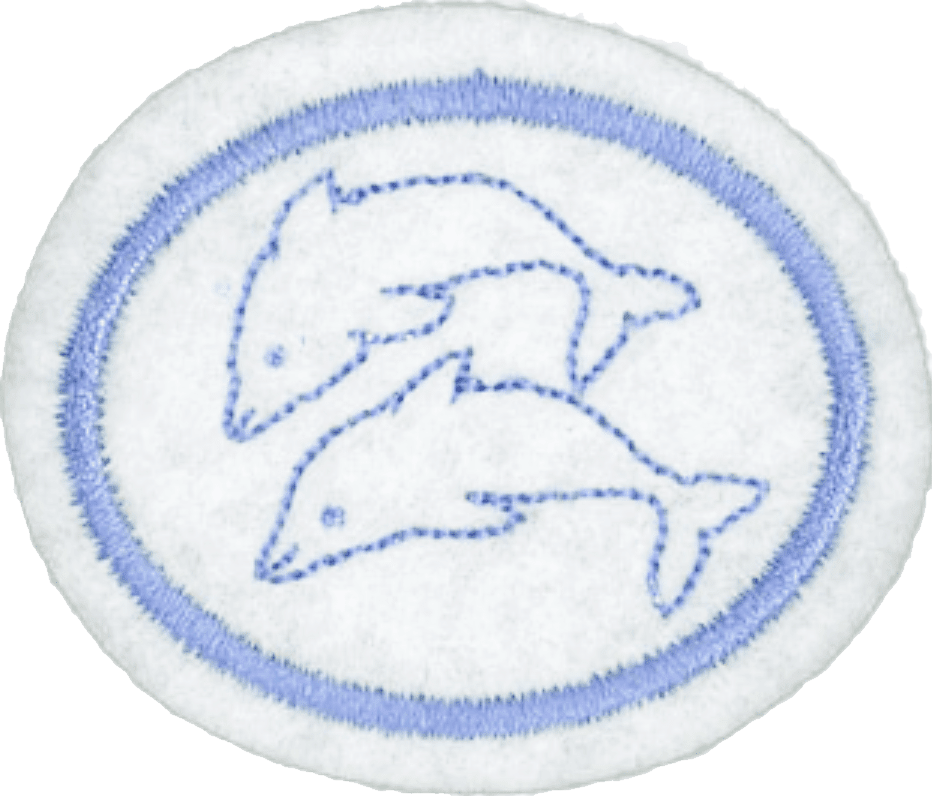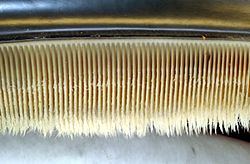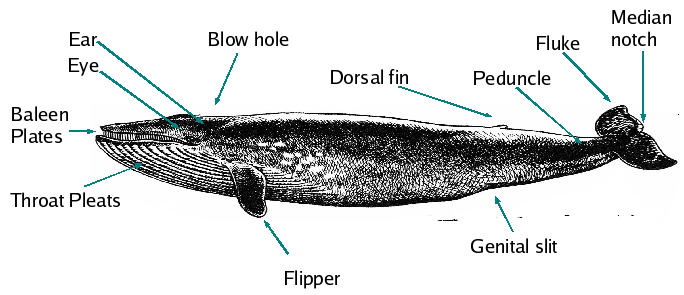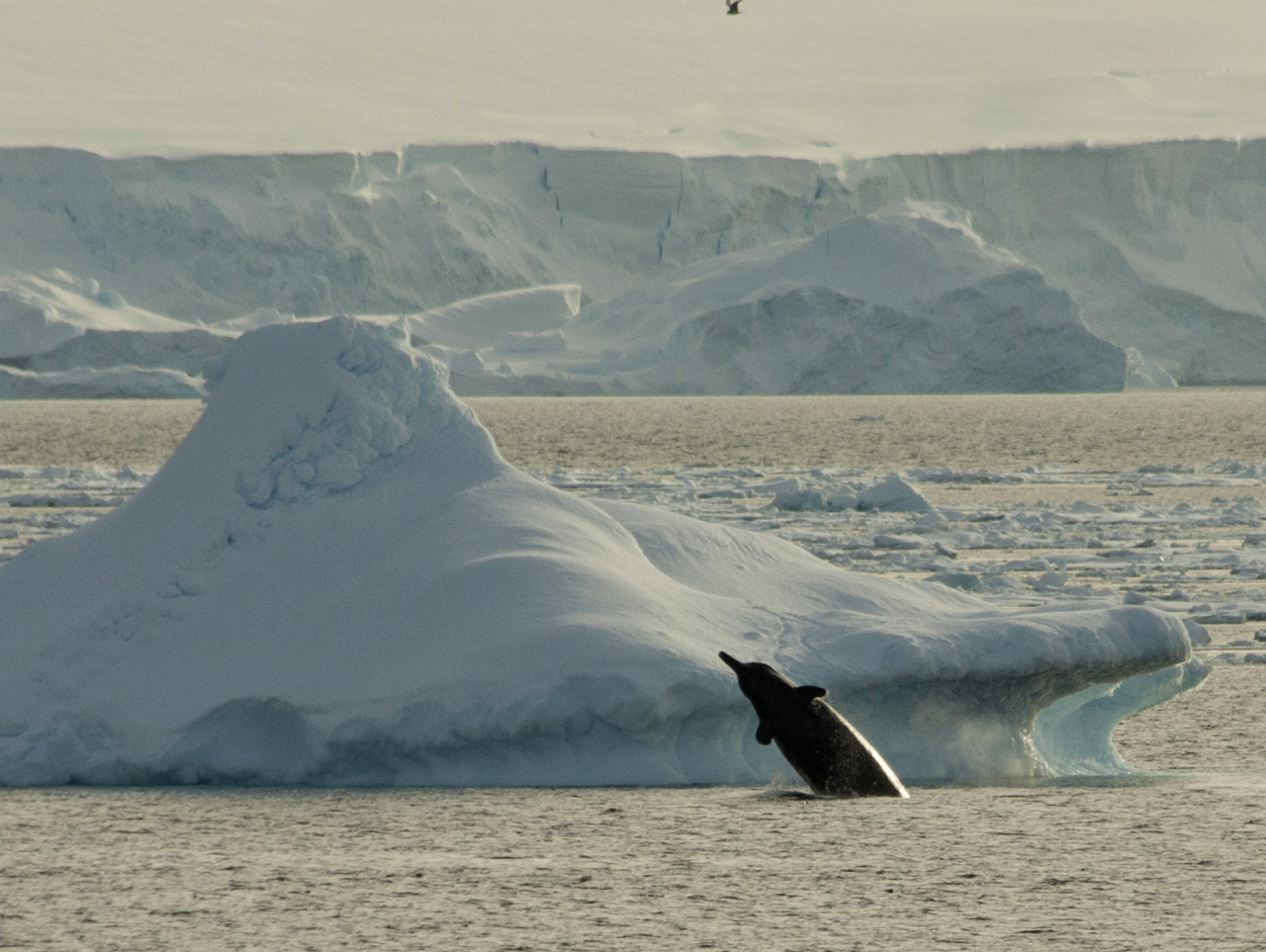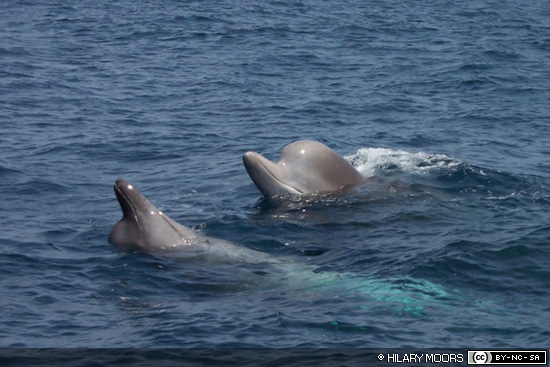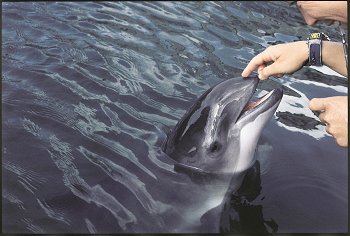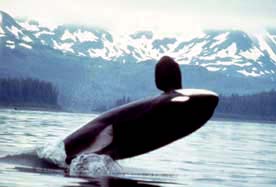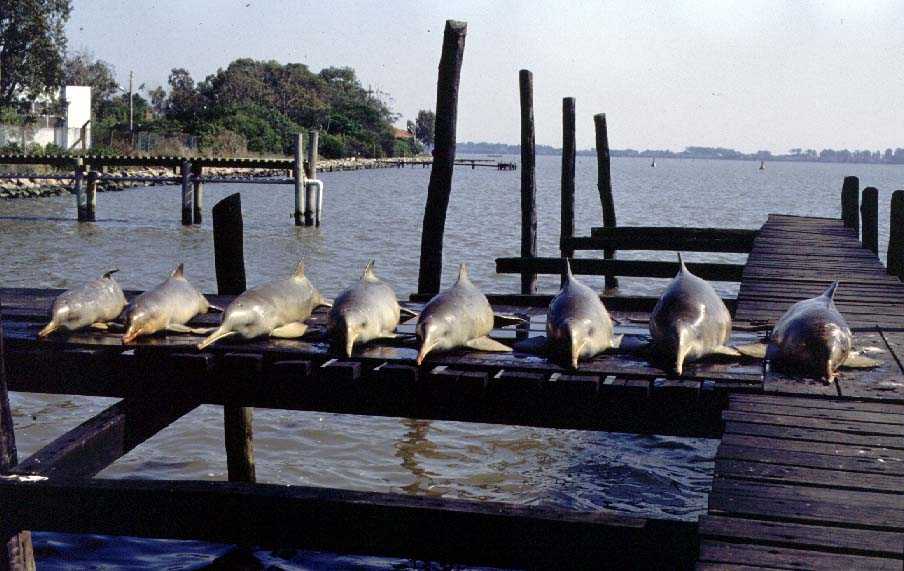Difference between revisions of "AY Honors/Cetaceans/Answer Key"
| Line 326: | Line 326: | ||
<!--T:38--> | <!--T:38--> | ||
| − | {{: | + | {{:AY Honors/Species Account/Berardius}} |
| − | {{: | + | {{:AY Honors/Species Account/Hyperoodon}} |
| − | {{: | + | {{:AY HonorsAY Honors/Species Account/Ziphius cavirostris}} |
====Family Phocoenidae: Porpoises==== <!--T:39--> | ====Family Phocoenidae: Porpoises==== <!--T:39--> | ||
| Line 390: | Line 390: | ||
<!--T:47--> | <!--T:47--> | ||
*Family Lipotidae: baiji | *Family Lipotidae: baiji | ||
| − | {{: | + | {{:AY Honors/Species Account/Lipotes vexillifer}} |
*Family Platanistidae: South Asian river dolphin | *Family Platanistidae: South Asian river dolphin | ||
| − | {{: | + | {{:AY Honors/Species Account/Platanista gangetica}} |
<!--T:48--> | <!--T:48--> | ||
*Family Pontoporiidae: La Plata river dolphin | *Family Pontoporiidae: La Plata river dolphin | ||
| − | {{: | + | {{:AY Honors/Species Account/Pontoporia blainvillei}} |
{{CloseReq}} <!-- 8 --> | {{CloseReq}} <!-- 8 --> | ||
Revision as of 20:22, 20 September 2021
1
The Cetacean family is different from most other sea life because Cetaceans are mammals.
This means :
- A: They give birth to live babies. The largest whale is the Blue Whale and its newborn baby will be up to 7 meters long and weigh up to 2700 kg/6,000 lbs, (about as much as two cars).
- The large whale mothers move to warm tropical waters to give birth and spend about six months there so their babies can grow a layer of fat (blubber) to help them survive the cold frigid waters where they live for the other six months. While in the warm waters the adult whales do not eat at all.
- B: They feed their babies milk. The baby will drink 400 liters / 100 gallons of milk and gain 90 kg / 200 lbs a day for the first seven months of its life.
- C: They have warm blood. A blue whale’s heart is the size of a small car and its aorta (the main heart artery) is the diameter of a soccer ball.
- D: They breathe air just like us. This means that they must hold their breath while under the water. A Sperm Whale can hold its breath for 30 minutes. When they want to breathe they come to the surface, blow out moist air from their lungs and snatch a new breath. Their nostrils are called blowholes. Baleen whales have two blowholes and toothed whales one blowhole. The whale hunters could tell what sort of whale it was by the shape of the spout blown out.
- E: They have some hair on their bodies. You may not easily see the hair on a whale but most have small whiskers on the chin.
In addition to the characteristics of mammals listed above, cetaceans differ from other sea life in other ways as well. One of these differences between a cetacean and a fish is the shape of the tail. The tail of a fish is vertical and moves from side to side when the fish swims. The tail of a cetacean – called a "fluke" – is horizontal and moves up and down.
2
The order Cetacea contains about 90 species, all marine except for four species of freshwater dolphins. The order contains two suborders: Mysticeti (baleen whales) and Odontoceti (toothed whales, which includes dolphins and porpoises). The species range in size from Commerson's dolphin, smaller than a human, to the blue whale, the largest animal ever known to have lived.
Baleen Whales
The baleen whales, also called whalebone whales or great whales, are one of two suborders of the Cetacea (whales, dolphins and porpoises). Baleen whales, rather than having teeth, have baleen plates which hang from the upper jaw and are used for filtering food from water. This distinguishes them from the toothed whales. Baleen is a type of hair but stiff like a soft fingernail. It grows from the roof of the mouth in two rows and is used to filter out food from water.
The whale is able to take in a huge mouthful of water and then squeeze its mouth shut and squeeze out the water while straining out the food. Baleen whales feed on tiny creatures called krill and need lots of these to fuel their bodies. Most of the big whales are baleen whales, e.g. Blue whale, humpback whale and fin whale. Krill is one of their major foods, which they strain through their baleen.
Baleen whales are generally larger than toothed whales, and females are larger than males. This group includes the Blue Whale, the largest animal species that has ever lived. Baleen whales have two blowholes, causing a V-shaped blow whereas toothed whales have a single blowhole.
Toothed Whales
The toothed whales have teeth because they feed on creatures much larger than krill, such as squid, fish, seals and even other whales. These whales are the dolphins and porpoises, the killer whale and the giant sperm whale.
Dolphins and porpoises mainly feed on fish and may hunt in groups called pods.
Killer whales eat seals, fish, dolphins and even blue whales. They are called the Wolves of the Sea.
The sperm whale is the largest toothed whale. It will eat fish and octopus but its favorite food is giant squid that live in the deep ocean. A sperm whale has been known to dive to 3200 meters looking for squid.
| Characteristic | Odontoceti (toothed whale) |
Mysticeti (baleen whales) |
| Feeding | Echolocation, fast | Filter feeder, not fast |
| Size | Smaller (except Sperm whale and beaked whale) | Larger (except pygmy right whale) |
| Blowhole | One | Two |
| Dentition | Teeth | Baleen plates |
| Melon | Ovoid, in anterior facial region | Vestigial or none |
| Skull and facial tissue | Dorsally asymmetric | Symmetric |
| Sexual dimorphism | Some species have larger males | Females always larger |
| Mandible | Symphyseal (fused anteriorly) | Nonsymphyseal |
| Pan bone of lower jaw | Yes | No |
| Maxillae projection | Outward over expanded supraorbital processes | Under eye orbit, with bony protuberance anterior to eye orbit |
| Olfactory nerve and Olfactory bulb | Absent& | Vestigial& |
| Periotic bone | tympanic bulla | Fused with skull& |
3
In some cultures, whales provide meat for both pets and for humans. Whales also provide oil for fuel, perfumes, and other products. Entire communities were established devoted to whaling. Although whaling is now illegal in most parts of the world, whales continue to provide benefits to man. They are a major tourist attraction in areas where they are common, and an entire industry has sprung up to bring people to see the whales.
There are many stories of dolphins protecting shipwrecked sailors against sharks by swimming circles around the swimmers. Because of their high capacity for learning, dolphins have been employed by humans for any number of purposes. Dolphins trained to perform in front of an audience have become a favorite attraction at many aquariums, for example SeaWorld. Such places may sometimes also provide an opportunity for humans to interact very closely with Dolphins. Dolphin/Human interaction is also employed in a curative sense at places where dolphins work with autistic or otherwise disabled children. The military has employed dolphins for various purposes from finding mines to rescuing lost or trapped persons.
4
Whales have a very thick layer of fat beneath their skin called blubber. Blubber is a very effective insulator, much like a wet suit which is used for keeping divers warm when they swim in cold waters. Blubber is far more effective than a wet suit because it is so thick. In fact, blubber can comprise up to 50% of the body mass of some cetaceans during some points in their lives. Blubber also serves as a source of energy, and whales metabolize (burn) fat to generate heat internally and thus warm themselves. People metabolize fat too when they shiver (shivering serves the same purpose - to warm us up).
5
5a
Quizlet flashcards (4 cards): Link
So God created the great creatures of the sea and every living and moving thing with which the water teems, according to their kinds, and every winged bird according to its kind. And God saw that it was good.
5b
- Son of man, take up a lament concerning Pharaoh king of Egypt and say to him:
- " 'You are like a lion among the nations;
- you are like a monster in the seas
- thrashing about in your streams,
- churning the water with your feet
- and muddying the streams.
5c
- Am I the sea, or the monster of the deep,
- that you put me under guard?
5d
- For as Jonah was three days and three nights in the belly of a huge fish, so the Son of Man will be three days and three nights in the heart of the earth.
6
Go beyond just the part about Jonah and the Whale everyone knows. There is a whole (short) Bible book on Jonah.
If you are teaching this honor to your unit, you can have them retell the story (and act it out) for worship at a campout or at a regular meeting. You can also have your Pathfinders tell the story during regular church service if your church has a time allotted for "Children's Story". Alternately, you can have them write it out and read it back to you (or to the group).
7
7a
These are the "strainers" in a baleen whale's mouth.
7b
A cetacean breaths through this little hole in the top of its head.
7c
The fin on the top of many cetaceans.
7d
These are hard to see because they're so small, but cetaceans all have them on the sides of their heads.
7e
The better to see you with!
7f
These are the folds in a baleen whale's throat and allow the whale's throat to expand when it fills its mouth with water to filter its food through its baleen.
7g
The tail.
7h
The fins on the side.
7i
The reproductive organ of a female cetacean.
7j
The notch in the middle of the trailing edge of the fluke.
7k
The part of the body to which the fluke is attached.
8
The order Cetacea includes whales, dolphins, and porpoises. There are around 90 living species, divided into the suborders Mysticeti (the baleen whales covering about 17 species) and Odontoceti (the toothed whales, including porpoises and dolphins covering about 73 species). All Cetacea live in ocean water except for the river dolphins. We present at least one sample from each family of Cetacea here to help you learn to identify them. For more details including range maps and comparative sizes visit https://en.wikipedia.org/wiki/List_of_cetaceans or the wikipedia article linked from the scientific name.
Quizlet Flashcards (40+ options): Link
Baleen whales
- Family Balaenidae: right whales
Adventist Youth Honors Answer Book/Species Account/Balaenoptera musculus
- Family Balaenopteridae: rorquals
Adventist Youth Honors Answer Book/Species Account/Megaptera novaeangliae
- Family Eschrichtiidae: gray whale - The only species in its family.
Adventist Youth Honors Answer Book/Species Account/Eschrichtius robustus
- Family Neobalaenidae: pygmy right whale - only one species in its family.
Adventist Youth Honors Answer Book/Species Account/Caperea marginata
Toothed whales
Toothed whales include both true whales, porposes, and ocean and river dwelling dolphins. The Toothed Whales make up about 73 out of the 90 known living species of Cetaceans. As the name implies, these species have teeth to hunt prey with.
Family Monodontidae: Narwhal and Beluga
These two related species live in cold Arctic waters.
Adventist Youth Honors Answer Book/Species Account/Delphinapterus leucas Adventist Youth Honors Answer Book/Species Account/Monodon monoceros
Family Physeteridae: Sperm Whales
There are three species in the sperm whale family, including the largest toothed predator in the world and smallest whale in the world. A common characteristic of these species is the spermaceti, a semi-liquid waxy white substance filling the 'case' or spermaceti organ in the whale's head, which is thought to be involved in providing ballast for diving and maintaining buoyancy. This may be done by flushing cold water through the nose, hardening the spermaceti, to dive, and pumping warm blood to melt the spermaceti to surface. All three species dive to great depths to find food, although the sperm whale is believed to dive much deeper than either of its smaller cousins. Sperm whales eat squid, fish, and even sharks. Adventist Youth Honors Answer Book/Species Account/Physeter macrocephalus Adventist Youth Honors Answer Book/Species Account/Kogia breviceps
Family Ziphiidae: Beaked Whales
There are 22 recognized species of Beaked Whales, toothed whales notable for their elongated beaks. Of air breathing animals, beaked whales are some of the most extreme divers. Cuvier's beaked whales regularly dive for an hour at a depth over 1,000 m (3,300 ft), and the longest and deepest foraging dive recorded is 137.5 minutes and 2,992 m (9,816 ft).
Beaked whales are one of the least known groups of mammals because of their deep-sea habitat, mysterious habits, and apparent low abundance. Only three to four of the 22 species are reasonably well-known. Baird’s and Cuvier's beaked whales were subject to commercial exploitation, off the coast of Japan, while the Northern bottlenose whale was extensively hunted in the northern part of the North Atlantic late in the 19th and early in the 20th centuries.
Giant Beaked Whale/Arnoux and Baird’s Beaked Whales (Berardius)
Where found: Arnoux’s beaked whale Berardius arnuxii lives in cold Southern Hemisphere waters and Baird’s beaked whale Berardius bairdii is found the cold temperate waters of the North Pacific.
Description: You would not be able to see the differences between Arnoux and Baird’s beaked whales except that they live on opposite ends of the world. They grow to 10–12 m in length and up to 14,000 kg (31,000 lb). They have very long prominent beak, even by beaked whale standards. The lower jaw is longer than the upper and the front teeth are visible even when the mouth is fully closed. The melon is particularly bulbous. The body shape is slender - the girth is only 50% of length. The body is uniformly coloured and a particular individual's colour may be anything from light grey through to black. The flippers are small, rounded and set towards the front of the body. The dorsal fin similarly is small and rounded and set about three-quarters of the way along the back. Adult males and females of both species pick up numerous white linear scars all over the body as they age and may be a rough indicator of age.
- B. arnuxii is known as Arnoux's beaked whale, southern four-toothed whale, southern beaked whale, New Zealand beaked whale, southern giant bottlenose whale, and southern porpoise whale.
- B. bairdii is known as Baird's beaked whale, northern giant bottlenose whale, North Pacific bottlenose whale, giant four-toothed whale, northern four-toothed whale, and North Pacific four-toothed whale.
Northern and Southern Bottlenose Whales (Hyperoodon)
Where found: Northern bottlenose whale are found in the North Atlantic Ocean and is found in cool and subarctic deep waters such as the Davis Strait, the Labrador Sea, the Greenland Sea and the Barents Sea and as far south as Cape Verde Islands. Southern bottlenose whales are probably the most abundant whale in Antarctic waters.
Description: These sister species are fairly rotund with an extremely bluff melon. The beak is long and white on males but grey on females. The dorsal fin is relatively small at 30–38 centimetres (12–15 in) and set behind the middle of the back. It is falcate (sickle-shaped) and usually pointed. The Northern species measures 9.8 metres (32 ft) in length when physically mature. The back is mid-to-dark grey, with a lighter underside. The Southern bottlenose whale smaller growing to 7.5 m (25 ft) in length when physically mature. The back is light-to-mid grey, also with a lighter underside. Males are about 25% larger than females. These bottlenose whales live up to 37 years. Weight estimates are hard to come by. For the northern bottlenose whale, 5,800–7,500 kilograms (12,800–16,500 lb) is given somewhat consistently, while the smaller and less studied southern species will be lighter. The bottlenose whales are some of the deepest diving mammals known, reaching depths of 1453 m (4767 ft) The whales feed on squid, sea cucumbers, herring, cuttlefish, sea stars and other benthic invertebrates.Video Northern Bottlenose Whale
AY HonorsAY Honors/Species Account/Ziphius cavirostris
Family Phocoenidae: Porpoises
Porpoises are small cetaceans that are distinct from dolphins, although the word "porpoise" has been used to refer to any small dolphin, especially by sailors and fishermen. The most obvious visible difference between the two groups is porpoises have spatulate (flattened) teeth distinct from the conical teeth of dolphins. Porpoises rear more young more quickly than dolphins. They have small flippers, notched tail flukes, and no beaks. All carry at least 11 pairs of small teeth in their upper and lower jaws.
Porpoises, divided into six species, live in all oceans, mostly near the shore.
Finless Porpoise (Neophocaena phocaenoides)
Where found: The Finless Porpoise lives in the coastal waters of Asia, especially around India, China, Indonesia and Japan. A unique fresh water population is found in the Yangtze River. At the western end, their range includes the length of the western coast of India and continues up into the Persian Gulf. Throughout their range, the porpoises stay in shallow waters (up to 50m), close to the shore, in waters with soft or sandy seabeds. In exceptional cases they have been encountered as far as 100 miles off-shore in the East China and Yellow Seas, albeit still in shallow water.
Description: The Finless Porpoise almost completely lacks a dorsal fin. Instead there is a low ridge covered in thick denticulated skin. Adult Finless porpoises are a uniform light grey color. Infants are mostly black with grey around the dorsal ridge area, becoming grey after 4-6 months.
Harbour Porpoise (Phocoena phocaena)
Where found: The Harbour Porpoise, as its name implies, stays close to coastal areas or river estuaries and as such is the most familiar porpoise to whale watchers. This porpoise often ventures up rivers and has been seen hundreds of miles from the sea.
Description: The Harbour Porpoise is a little smaller than the other porpoises. It is about 75 cm long at birth. Males grow up to 1.6 m and females to 1.7 m. The females are correspondingly heavier, with a maximum weight of around 76 kg compared with the males' 61 kg. The body is robust and the animal is at its maximum girth just in front of its triangular dorsal fin. The beak is poorly demarcated. The flippers, dorsal fin, tail fin and back are a dark grey. The sides are a slightly speckled lighter grey. The underside is much whiter, though there are usually grey stripes running along the throat from the underside of the mouth to the flippers.
Family Delphinidae: Oceanic Dolphins
Dolphins, including the river dolphins, comprise 45 species out of the 90 Cetacean species. Six species in the family Delphinidae are commonly called "whales", but genetically are dolphins. They are sometimes called blackfish. These are the Melon-headed whale, (Peponocephala electra) Killer whale/Orca (Orcinus orca). Pygmy killer whale, (Feresa attenuata), False killer whale, (Pseudorca crassidens), Long-finned pilot whale, (Globicephala melas) and the Short-finned pilot whale (Globicephala macrorhynchus)
Orca, or killer whale (Orcinus orca)
Where found: The orca is found in all the world's oceans, from the frigid Arctic and Antarctic regions to warm, tropical seas.
Description: The Orca or Killer Whale is the largest species of the oceanic dolphin family (Delphinidae). Orcas are versatile predators, with some populations feeding mostly on fish and others on other marine mammals, including large whales. Wild orcas are usually not considered a threat to humans.
Bottlenose dolphin (Tursiops truncatus)
Where found: The Bottlenose dolphin inhabits warm and temperate seas worldwide and may be found in all but the Arctic and the Antarctic Oceans.
Description: The Bottlenose Dolphin is the most common and well-known dolphin species. They are gray, varying from dark gray at the top near the dorsal fin to very light gray and almost white at the underside. This makes them harder to see both from above and below when swimming. The elongated upper and lower jaws form what is called the rostrum and give the animals their name of Bottlenose. The real nose however is the blowhole on top of the head, and the nasal septum is visible when the blowhole is open. Their face shows a characteristic "smile".
Common dolphin (Delphinus delphis)
Where found: The common dolphin is widely distributed in temperate, sub-tropical and tropical waters throughout the world in a band roughly spanning 40 degrees south to 50 degrees north. The species typically prefer enclosed bodies of water such as the Red and Mediterranean Seas. Deep off-shore waters and to a lesser extent over continental shelves are preferred to shallow waters. Some populations may be present all year round, others appear to move in a migratory pattern. Preferred surface water temperature is 10-28 degrees Celsius.
Description: Common dolphins travel in groups of around 10-50 in number and frequently gather into schools numbering 100 to 2000 individuals. These schools are generally very active - groups often surface, jump and splash together. Typical behavior includes breaching, tail-slapping, chin-slapping, bow-riding and porpoising.
Superfamily Platanistoidea: River Dolphins (fresh water dwelling)
River Dolphins are part of the toothed whale group but are uniquely adapted to living in fresh water.
- Family Iniidae: river dolphins
Adventist Youth Honors Answer Book/Species Account/Inia geoffrensis
- Family Lipotidae: baiji
Baiji (Lipotes vexillifer)
Where found: Yangtze River in China until extinction
Description: The Baiji (Chinese: 白鱀豚) was a freshwater dolphin found only in the Yangtze River in China. Lipotes meaning "left behind", vexillifer "flag bearer". The baiji population declined drastically in decades as China industrialized and made heavy use of the river for fishing, transportation, and hydroelectricity. Efforts were made to conserve the species, but a late 2006 expedition failed to find any baiji in the river. Organizers declared the baiji functionally extinct, which would make it the first known aquatic mammal species to become extinct since the demise of the Japanese sea lion and the Caribbean monk seal in the 1950s. It would also be the first recorded extinction of a well-studied cetacean species to be directly attributable to human influence. In August 2007, a Chinese man reportedly videotaped a large white animal swimming in the Yangtze. Although it was tentatively confirmed that the animal on the video is probably a baiji, the presence of only one or a few animals, particularly of advanced age, is not enough to save a functionally extinct species from true extinction. The last known living baiji was Qiqi (淇淇), who died in 2002.
- Family Platanistidae: South Asian river dolphin
South Asian river dolphin (Platanista gangetica)
Where found: The South Asian river dolphins are native to the freshwater river systems located in Nepal, India, Bangladesh, and Pakistan. They can be most commonly found in water with high abundance of prey and reduced flow. The Ganges subspecies (P. g. gangetica) can be found along the Ganges-Brahmaputra-Meghna and Karnaphuli-Sangu river systems of Bangladesh and India, although its range formerly extended to Nepal. A small subpopulation can be still found on the Ghaghara River and possibly the Sapta Kosi River. The majority of the Indus subspecies (P. g. minor) is located between the Sukkur and Guddu barrage in the Sind Province of Pakistan. Two smaller subpopulations have also been recorded in the Punjab and Khyber Pakhtunkhwa Provinces. Since the two river systems are not connected in any way, it is a mystery how these sub-species ended up in the two rivers. It is improbable that the river dolphins made it from one river to another through the sea route since the two estuaries are very far apart. Makes you think God put them there.
Description: The South Asian river dolphin has the long, pointed nose characteristic of all river dolphins. Its teeth are visible in both the upper and lower jaws even when the mouth is closed. The teeth of young animals are almost an inch long, thin and curved; however, as animals age, the teeth undergo considerable changes and in mature adults become square, bony, flat disks. The snout thickens towards its end. The species is effectively blind, although it may still be able to detect the intensity and direction of light. Navigation and hunting are carried out using echolocation. They are unique among cetaceans in that they swim on their sides. The body is a brownish color and stocky at the middle. The species has only a small, triangular lump in the place of a dorsal fin. The flippers and tail are thin and large in relation to the body size, which is about 2-2.2 meters in males and 2.4-2.6 m in females. The oldest recorded animal was a 28-year-old male, 199 cm in length. Mature adult females are larger than males. Entanglement in fishing nets can cause significant damage to local population numbers. Some individuals are still taken each year and their oil and meat used as a liniment, as an aphrodisiac, and as bait for catfish. Irrigation has lowered water levels. Poisoning of the water supply from industrial and agricultural chemicals may have also contributed to population decline. Perhaps the most significant issue is the building of more than 50 dams along many rivers, causing the segregation of populations and a narrowed gene pool in which dolphins can breed. Currently, three subpopulations of Indus dolphins are considered capable of long-term survival if protected.
- Family Pontoporiidae: La Plata river dolphin
La Plata Dolphin (Pontoporia blainvillei)
Where found: La Plata dolphin is found in coastal Atlantic waters of southeastern South America. It is a member of the river dolphin group and the only one that actually lives in the ocean and saltwater estuaries, rather than inhabiting exclusively freshwater systems.
Description: The La Plata dolphin or Franciscana has the longest beak (as a proportion of body size) of any cetacean — as much as 15% in older adults. Males grow to 1.6 m (5 ft, 3 in) and females to 1.8 m (5 ft, 10 in). The body is a greyish brown colour, with a lighter underside. The flippers are also very large in comparison with body size and are very broad, but narrow on joining the body, so are almost triangular in shape. The trailing edges are serrated. The crescent-shaped blowhole lies just in front of a crease in the neck, giving the impression that dolphin forever has its head cricked upwards. The dorsal fin has a long base and a rounded tip. The La Plata dolphin weighs up to 50 kg (110 lb), and lives for up to 20 years. The gestation period is around 10–11 months and juveniles take just a few years to mature. Females may be giving birth by the age of five.
Notes
This honor has significant overlap with Marine Mammals. Why not teach or earn them both at the same time?
References
Wikipedia articles
Other references
- Education, conservation, and research from the world's first cetacean protection organization.
- Marinebio.org
- ↑ Dolphin Senses
- ↑ Baleen Whales: Senses
- ↑ Hooker, Sascha K. (2009). "Toothed Whales. Overview". In Perrin, William F.; Wursig, Bernd; Thewissen, J. G. M.. Encyclopedia of Marine Mammals (2 ed.). Burlington Ma. 01803: Academic Press. p. 1174. Template:Hide in printTemplate:Only in print. http://www.elsevier.com/wps/find/bookdescription.cws_home/716899/description#description.
